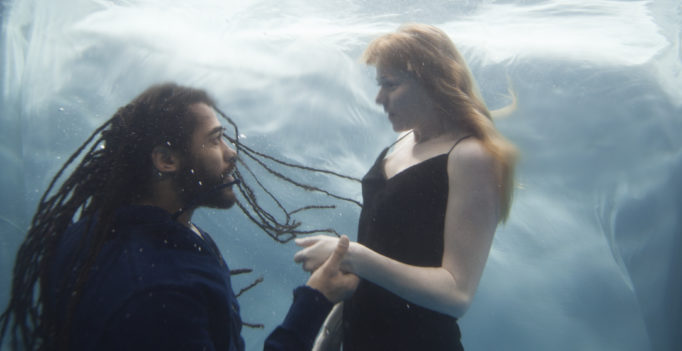By: Trevor Chartrand
Canadian filmmaker Virginia Abramovich makes her feature film debut with Between Waves, a captivating (albeit heavy-handed) exploration of mental illness and grief, framed through the sci-fi lens of inter-dimensional travel.
The film centers on Jamie (Fiona Graham), a troubled photographer haunted by childhood trauma, having discovered her mother’s suicide years ago. In present day, Jamie is faced with a similar sense of loss when her boyfriend Isaac (Luke Robinson) goes missing. Concerned by his sudden absence, Jamie considers that Isaac’s disappearance could have been caused by a breakthrough in his scientific research on parallel dimensions. Jamie soon begins to see glimpses of Isaac, visions she interprets as a ‘parallel universe’ version of her beloved. He encourages her to take a vacation they had planned together, and Jamie is left wondering whether she’s pursuing him in an effort to join him in his alternate dimension, or if her troubled mind is conjuring images of him as she seeks closure.
Our protagonist Jamie is an unreliable narrator in this film to say the least, making for a mildly frustrating viewing. Early in the movie, it’s established that Jamie could be having hallucinations from medication withdrawals, which seems more logical and plausible than the possibility that she’s travelling between dimensions. The question of ‘is it real, or not real?’ permeates the entire feature in a distracting way, rather than an intriguing one. Between Waves is laced with a thick layer of unnecessary ambiguity, making this film a bit of a painstaking endeavour at times.
To the credit of the filmmakers though, Between Waves concludes strongly by disregarding this ‘what is real’ pondering in favour of a strong message. Whether Jamie’s visions of Isaac are real or not is irrelevant; either way, Jamie’s journey helps her to understand herself and find clarity. The answer doesn’t matter, which is refreshing, even if it does render the ambiguity of the whole thing a tad redundant.
Jamie’s fluidity is represented by water in the film, and the cinematography can be striking and bold to reflect this. The character begins the movie as a trickle out of a water bottle, ending as crashing waves and cascading waterfalls as she rebuilds herself and finds her strength. One of the most interesting things in Between Waves are the many interpretations one could make about the importance of water and what it means to the characters, as well as the narrative.
While Between Waves is a bit of a slog to sit through, it leaves you with plenty to think about. Abramovich’s film is rife with vague metaphors and artistic symbols, while remaining accessible enough for general audiences to enjoy. Overall, it’s an interesting film likely to inspire deep and meaningful conversations among it’s viewers.
**********
Do You Tweet? Follow These Tweeple:
Trevor Chartrand: @OhHaiTrebor




Be the first to comment